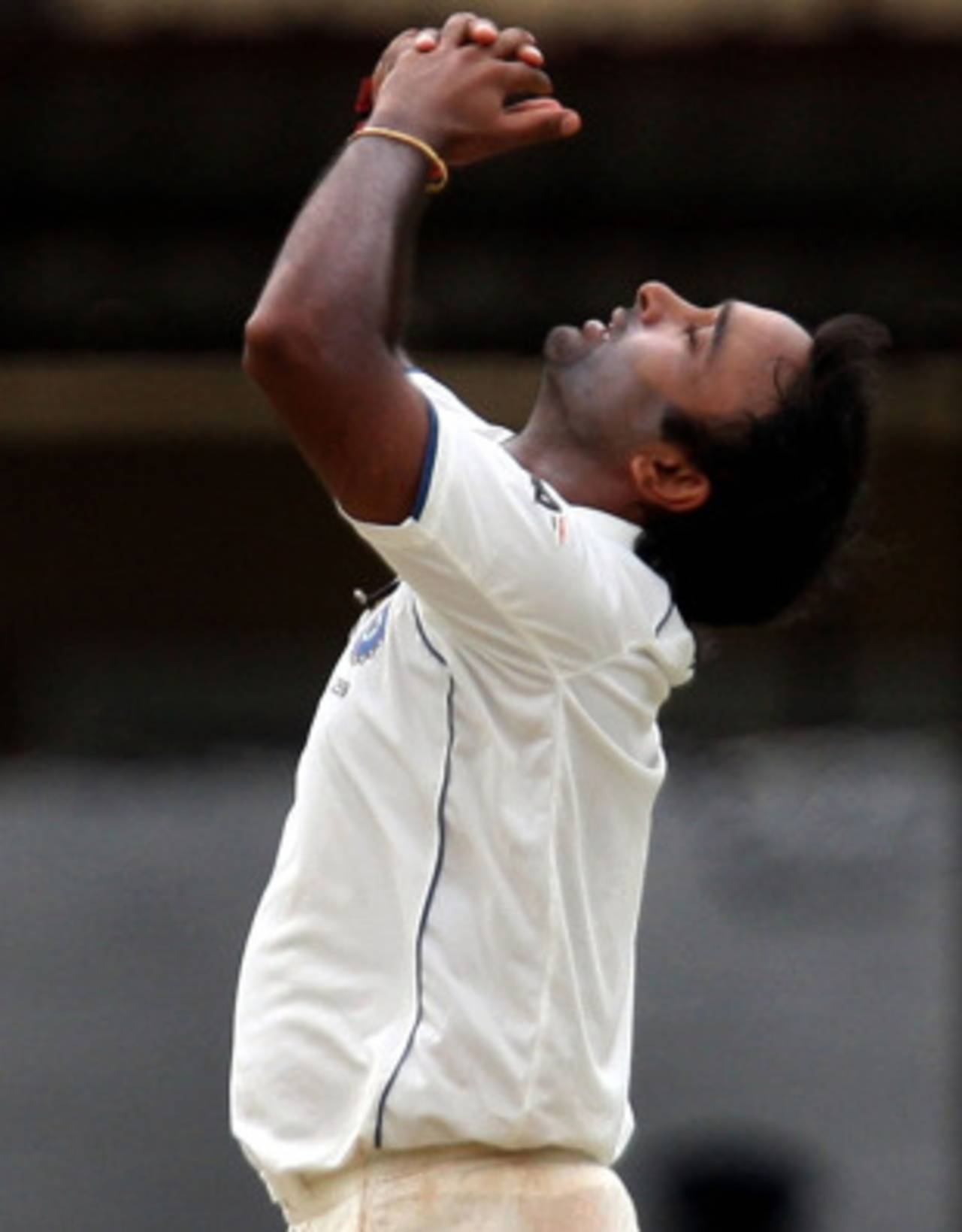MS Dhoni isn't doing his attack any service. Old-school captains used to say their first and supreme duty was to win the toss. Many had theories on how to win the toss too. Ranjitsinhji wrote in The Jubilee Book of Cricket that the coins were more inclined to come down "tails" because the "heads" side is slightly heavier and given to land undermost. Sunil Gavaskar is believed to have advised some to call the side that is invisible to the captains before the coin is being flipped.
Dhoni and India, though, have found that nothing works. Kumar Sangakkara even hid the coin with his left hand when flipping it today. India haven't had it right at the toss for eight matches in a row now, three of them in Sri Lanka, where you really don't want to be
losing the toss. Not with this bowling attack.
With 121 wickets and 41 caps between them, this is India's most inexperienced attack since the Chennai Test of 2000-01 against Australia when Harbhajan Singh, Zaheer Khan, Nilesh Kulkarni and Sairaj Bahutule had 46 wickets and 15 caps between them. Ishant Sharma, Abhimanyu Mithun, Pragyan Ojha and Amit Mishra badly needed runs on the board to put any kind of doubt in the batsmen's mind, but despite all the light-hearted musings of old captains, nothing much can be done about the toss.
The only other thing that would have created doubt was good bowling from both ends. That wasn't to happen either. When Mithun bowled testing spells either side of lunch, Ojha and Mishra leaked runs. When Ojha sorted out his run-up and no-ball problems, and bowled his last 16 overs for 32 runs and a few difficult deliveries, Mishra was generous at the other end.
For all the inexperience of the attack, 14 no-balls in a day's play - 11 of them from spinners - is unpardonable. Dhoni has spoken about how much he would hate it if one of the no-balls got a wicket, but there hasn't been much change from the bowlers on that account. India have by now bowled a whopping 71 no-balls so far in a tour of three first-class matches and a day. You shouldn't really need a bowling coach to sort out these problems, but that there has been no sign of improvement despite having such a specialist coach is baffling.
Watching Mishra bowl full tosses and no-balls, and often running onto the danger area, making life difficult for his own batsmen who will have to bat in the last innings, was to question the wisdom behind not including a third seamer on a track that is known to offer seam movement. India themselves were rattled by Dammika Prasad on the first morning two years ago.
It is plausible that India sensed a pitch that is dry underneath the surface, and wanted to have two spinners when bowling later in the match. But however dry the pitch might have been, Munaf Patel really couldn't have done worse than a legspinner who inspired such confidence from the team that his first ball to Tillakaratne Dilshan - in as early as the 13th over - was bowled with a long-on and long-off in place. And it is with India, down 0-1, that the burden of making play lies with. Mishra and Ojha have hardly looked like making any throughout the tour. It was a time that India needed something out of the ordinary, but they chose the safe route.
With Harbhajan out and Mishra in, India were reduced to the same attack that went for 514 for 9 in the tour game before the first Test. Ishant and Mithun have shown improvements and have slogged it out through the tour, but Ojha and Mishra were just as unimpressive - that too on a pitch that gave them turn.
Credit should not be taken away from the Sri Lankan batsmen, who were prepared to graft and wait for the loose balls, which arrived at due intervals. It is precisely because of that graft that 293 for 4 sounds worse for India.
That one ball from Mishra to Dilshan with an ultra defensive field-set in the first hour on a responsive pitch sent out an ominous message. It said a lot about spinners outside Harbhajan - and Harbhajan hasn't actually been going through a purple patch. It perhaps reiterated the team's lack of confidence in Munaf's fitness. It said a lot about the way this match might be heading.
Sidharth Monga is a staff writer at Cricinfo
